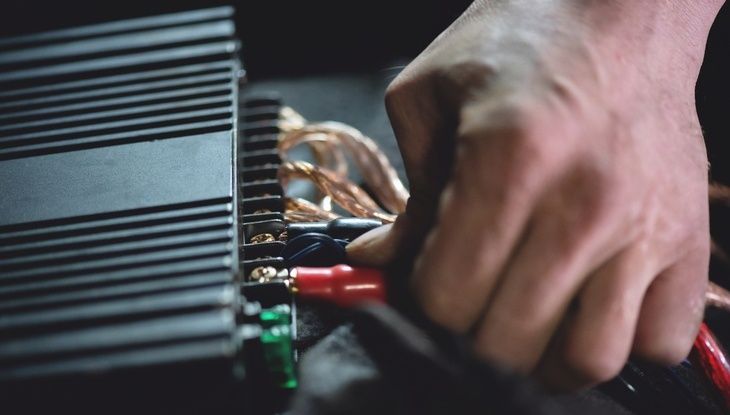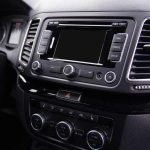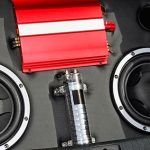There’re numerous reasons why you may consider connecting two amps together to your car or home stereo. Maybe there’s an old but functional and powerful amp sitting idle in your home and you’re considering adding it to your new amp, or you’ve bought an extra subwoofer or speakers that you want to power with a dedicated amplifier. Also, you may consider upgrading your sound system by adding an extra amplifier to make it play louder with enhanced sound quality.
Most audiophiles connect multiple amps together with the aim of connecting one amplifier to the speakers and the other amplifier to the subwoofer for enhanced sound quality. Others connect multiple amplifiers for louder sound output. But how can you do this? In this guide, you’ll run how to connect two amps together.
Essentially, you can connect two or more amps together using three methods including: with a speaker selector switch, with an active crossover, or with preamp outputs.
1. Connecting Two Amplifiers with a Speaker Selector Switch
With this method, you’ll connect two amps to a single speaker or several pairs of speakers. However, you’ll only be able to use one amp at a time. Thus, this method won’t increase the power output and loudness of your sound system.
You may want to connect two amplifiers this way just to compare the kind of sound output that two different amps may have or just because you want to feel the sound of two amps with different music genres or use different amps at different times depending on their performance. For instance, maybe one of the amps plays rock music better while the other amp plays classic music better and you want them to remain connected together rather than connecting one amp at a time whenever you change the music genre.
For this connection, you’ll need to get a speaker selector switch. The kind of switch you choose should be the one that allows for complete disconnection of one amp before switching to the other amp, else you’ll damage your sound system.
Here’re the steps to follow when connecting two amplifiers together with a speaker selector switch:
Step 1- Check the back panel of the switch for connectors labeled as “input” and connectors labeled as “output”. The connectors labeled “input” are for connecting two amplifiers while the connectors labeled as “output” are for connecting speakers.
Step 2- Connect speaker wire from the amplifier output into the “A” switch input. Ensure you connect the amplifier R output to the switch R input and the amplifier L output to the switch L input. Connecting the terminals wrongly can damage your equipment.
Step 3- Connect speaker wire from the second amplifier output into the “B” switch input. Ensure you connect the speaker wire appropriately as described in the previous step.
Step 4- Connect speaker wire from the first output of the switch to the speaker input. If you have two speakers, connect a second speaker wire from the second output of the switch to the speaker input of the second speaker. Ensure you connect the terminals properly such that the R terminal of the switch output is connected to the R terminal of the speaker input and L is connected to L.
Step 5- Assuming you’ve connected your receiver to the amplifiers, you’ll simply use the switch controls to switch between the two amplifiers.
2. Connecting Two Amplifiers with an Active Crossover
An active crossover is a standalone crossover that separates sound frequencies such that it channels high frequencies to tweeters, midrange frequencies to midrange speakers, and low frequencies to subwoofers.
You can use a 2-way or 3-way active crossover to connect two amplifiers together. In this case, you’ll connect one of the amps to high-frequency speakers and the other amp to low-frequency speakers. That way, you’ll enjoy clear highs, deeper lows, and less distorted sound with more volume.
Here’re the steps to follow:
Step 1- Connect the output of the head unit to the input of the active crossover. Ensure you connect the R head unit output to the R crossover input. Do the same for the L channel.
Step 2- Connect the high signal output of the active crossover to the amplifier that you’ll want to connect to high-frequency speakers (tweeters).
Step 3- Connect the low signal output of the active crossover to the amplifier that you’ll want to connect to low-frequency speakers (woofers and/or subwoofers).
Step 4- Play music from the head unit and adjust the crossover frequencies with the control knobs as needed to enjoy high-quality full-range sound.
3. Connecting Two Amplifiers with Preamp Outputs
Most modern receivers and head units have a preamp. The preamp switches low-level audio signals and amplifies them into line-level signals. The line-level signals are accessible through the preamp outputs. Preamp outputs are specifically designed for connecting to an amp.
For this method, you can use both amplifiers simultaneously. Maybe you’ll connect one amp to the front speakers and the other amp to the subwoofer or however you want it. Here’s how to connect multiple amplifiers one source:
Step 1- Locate the preamp outputs on the head unit or receiver. They should be labeled “Pre Out”.
Step 2- Connect an RCA speaker cable from any pair of L & R pre-outs to the L & R inputs of the first amplifier.
Step 3- Connect a second RCA speaker cable from another pair of L & R pre-outs to the L & R inputs of the second amplifier.
Step 4- Connect each amplifier to the speakers or subwoofers you want.
Step 5- Play music from the receiver and enjoy using two amps connected together.
How to Hook Up 2 Amps with 1 Power Wire
When hooking two amps together, you may want to connect them with one power wire, especially when you don’t have extra power sockets nearby or when other power sockets are hooked to other equipment and only one power socket is available for the amplifiers.
The best option is to use a power distribution block. A power distribution block is a device that allows for the distribution of electric current from one power source to multiple devices. It does so by branching the circuit from a single source to several devices. Thus, it reduces the number of power sources required to power multiple devices, thereby reducing power cable clutter.
Here’s how to hook up 2 amps with 1 power wire:
Step 1- Connect the power distribution block to the power outlet with a power cable.
Step 2- Connect the power cable of one amplifier to one pair of the power outputs on the power distribution block.
Step 3- Connect the power cable of the second amplifier to another pair of the power outputs on the power distribution block.
Step 4- Turn on the power switch on the power outlet.
Step 5- Turn on the amplifiers.
Conclusion
As you can see, it doesn’t need rocket science to learn how to connect two amps together. It’s something you can easily do. Just ensure you get the connections right to avoid lacking sound or damaging equipment. When powering them on, remember to first power on the head unit or receiver and then turn on the amp. When turning them off, first, turn off the amplifiers and then proceed to turn off the head unit or receiver.
Michael Evanchuk is a San Francisco-based sound engineer with 20 years’ experience installing, troubleshooting, and repairing commercial, automotive, and household sound equipment. Evanchuk owns an auto stereo center, where he offers highly competitive car audio installation and repair services. He has written dozens of articles on different sound engineering topics, all of which have been published in leading journals, blogs, and websites.





